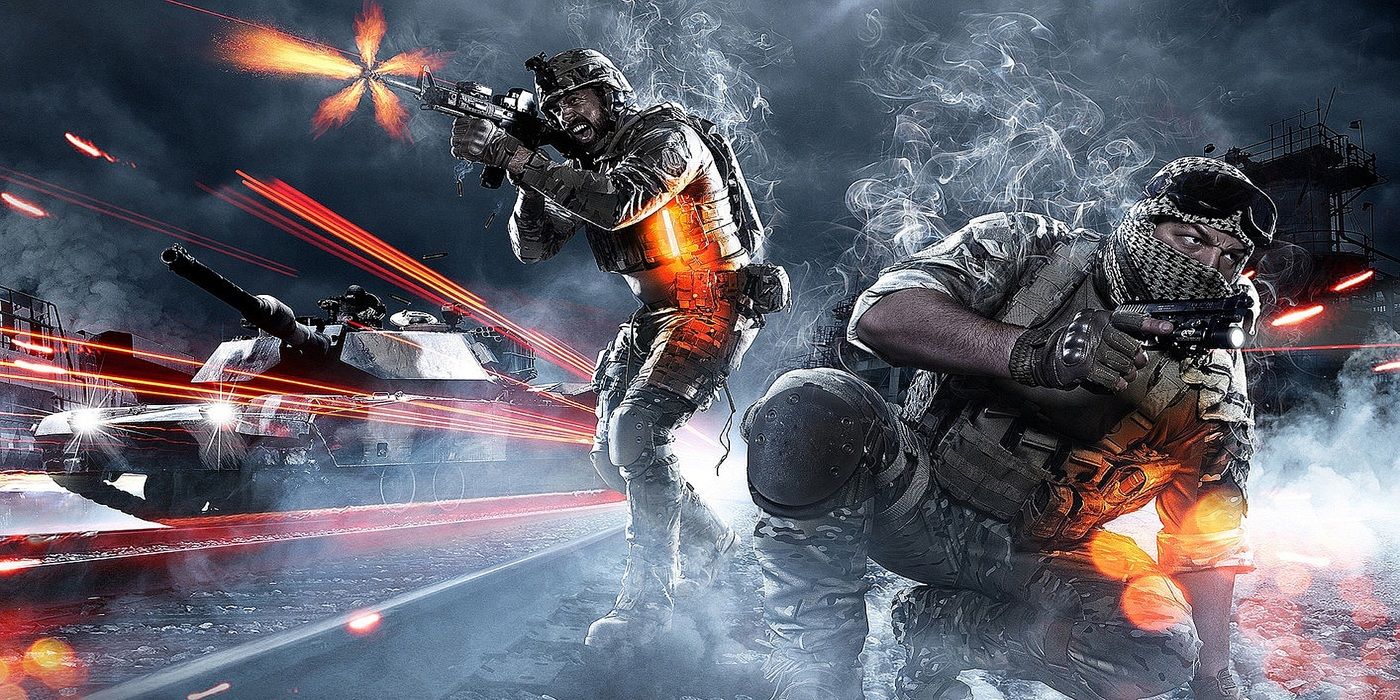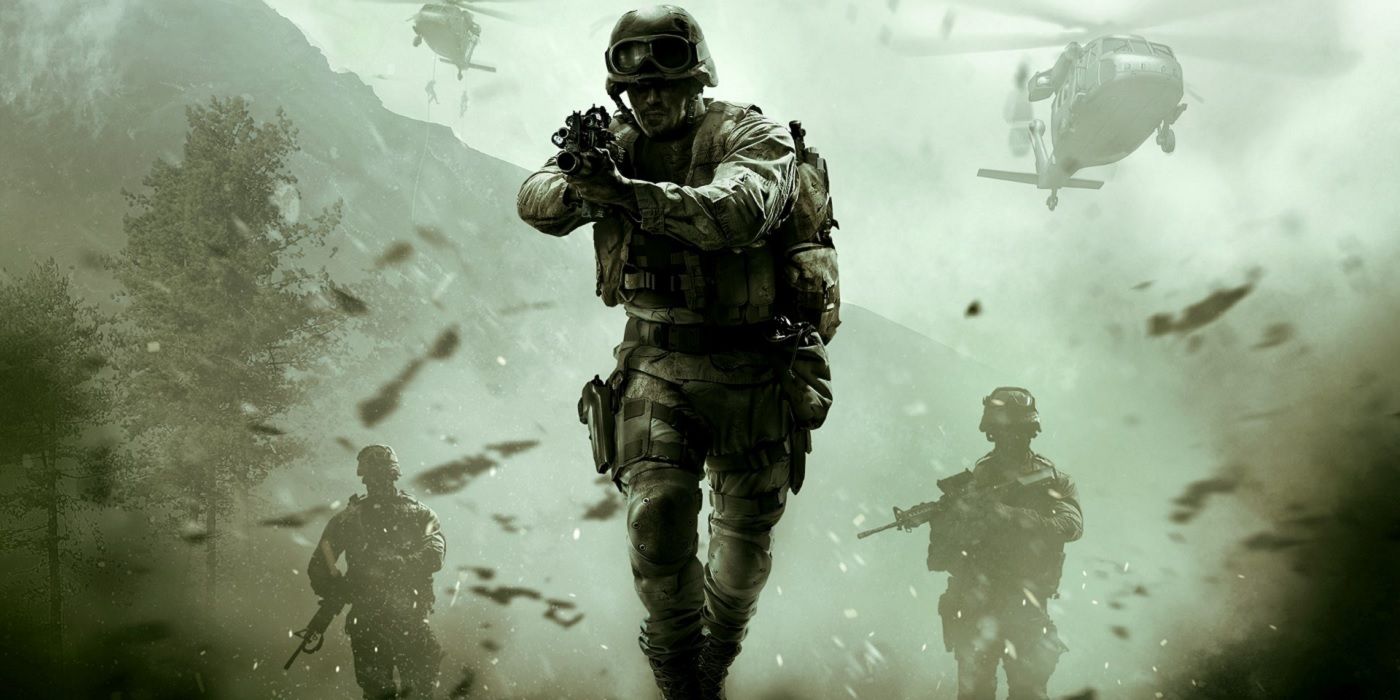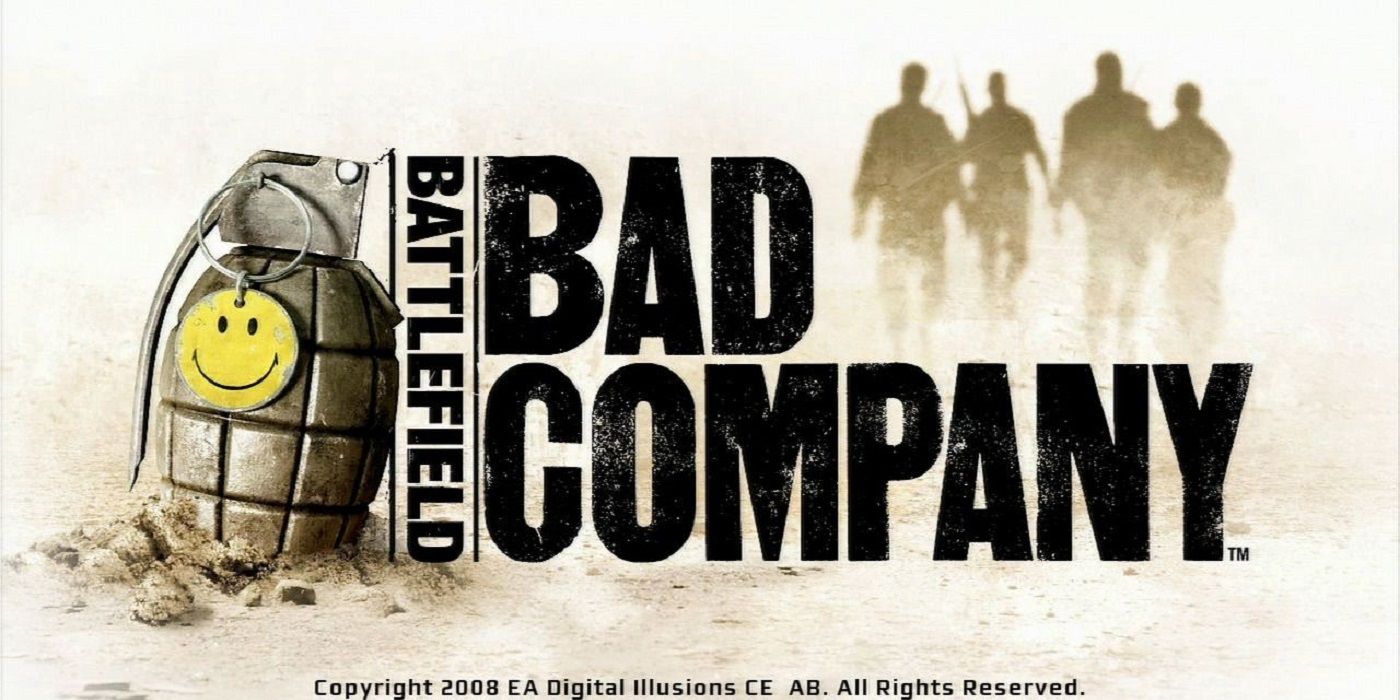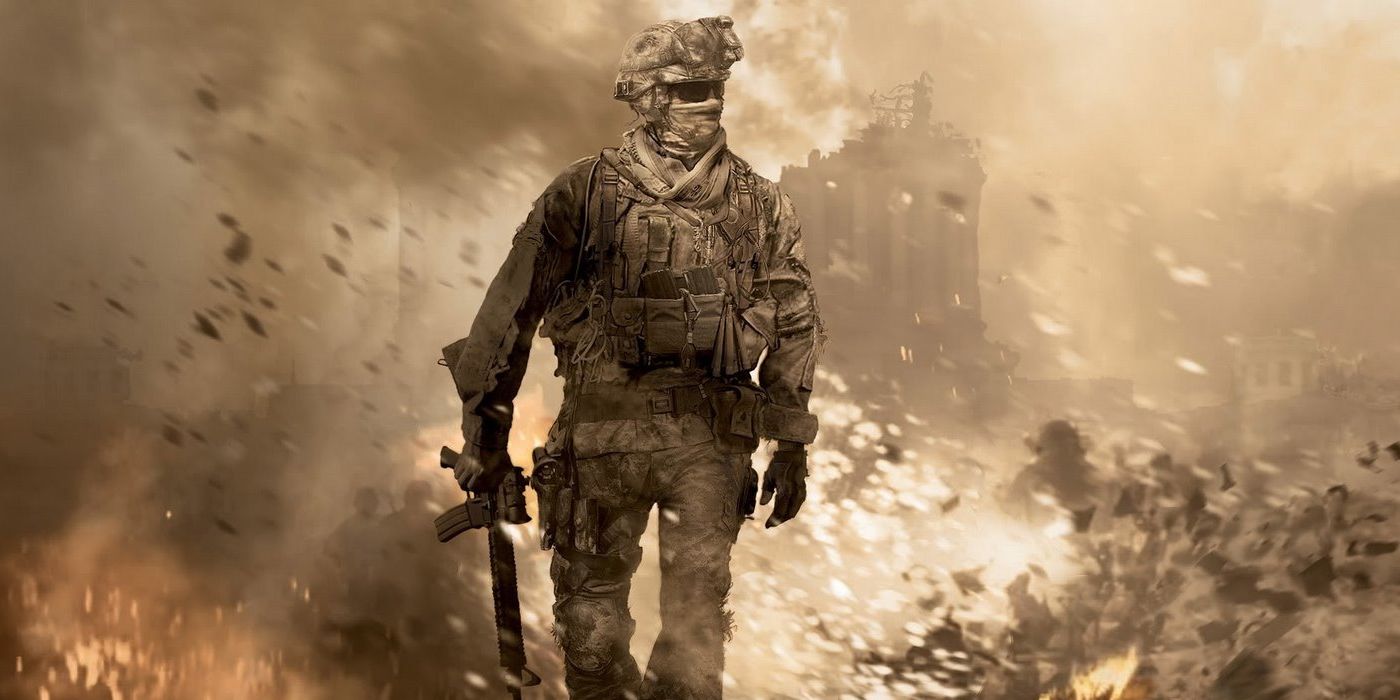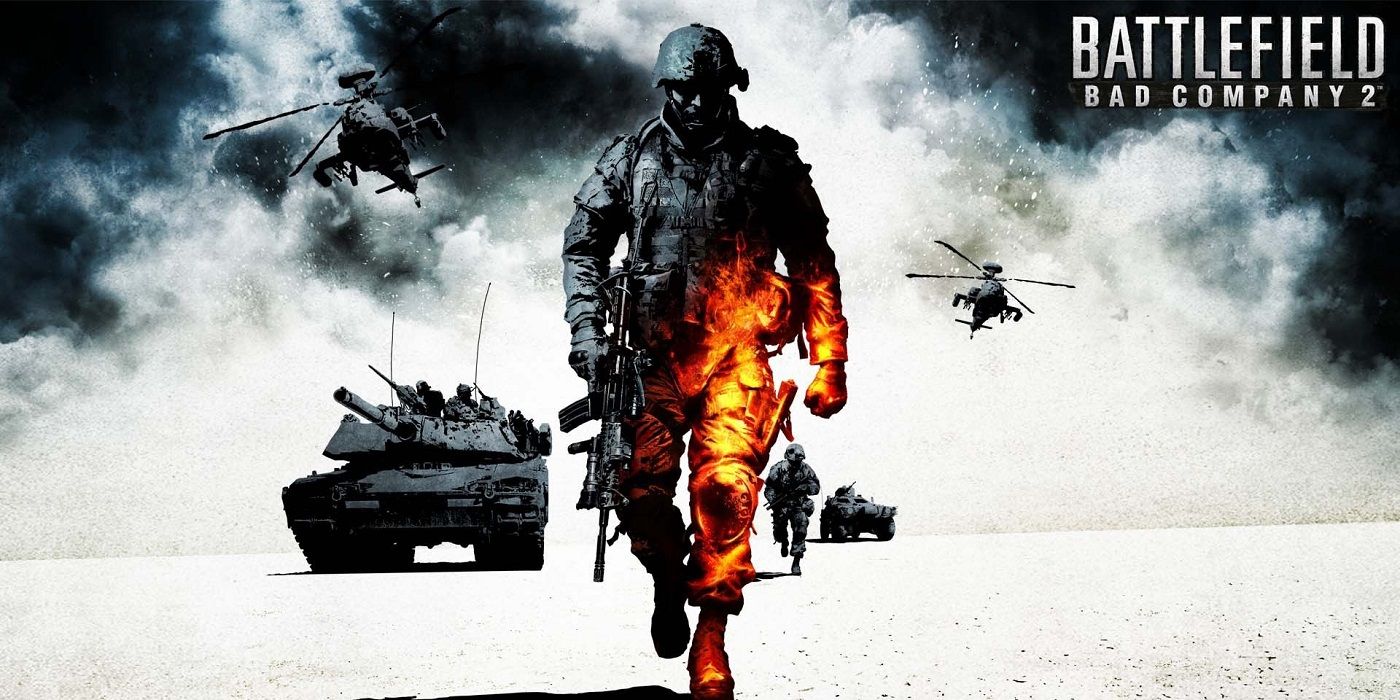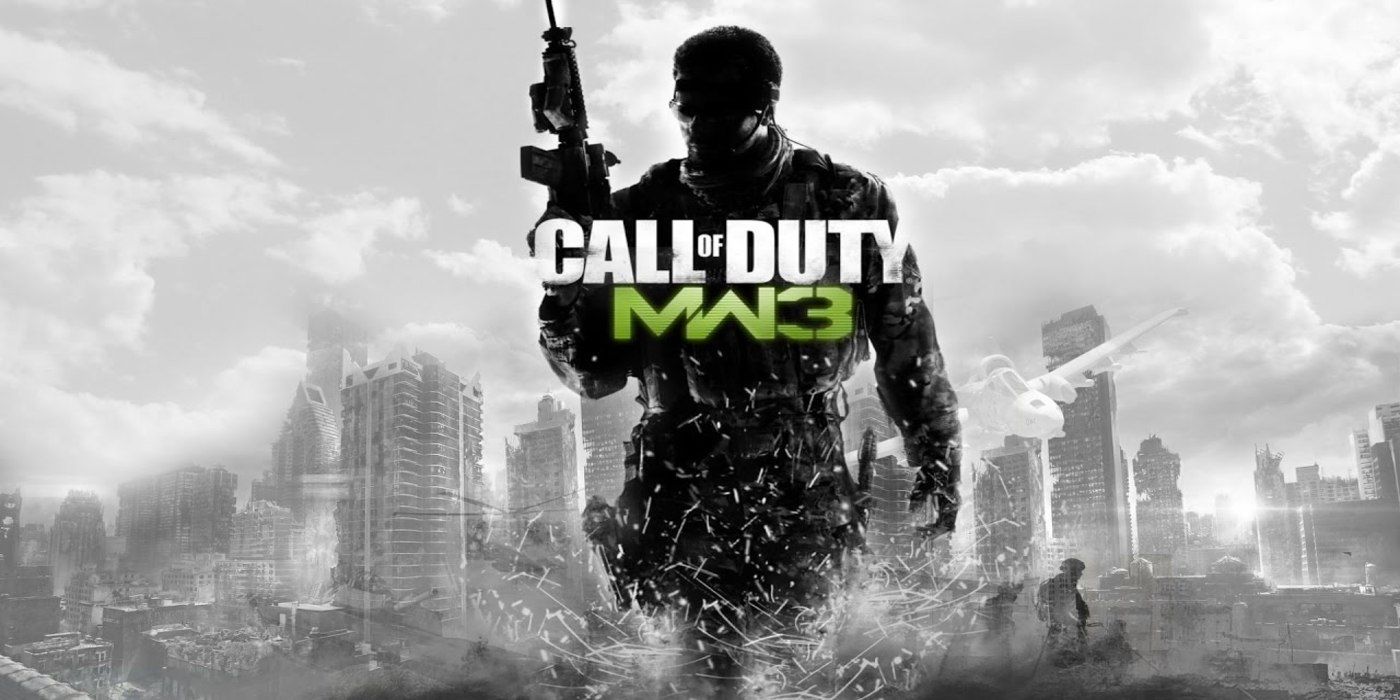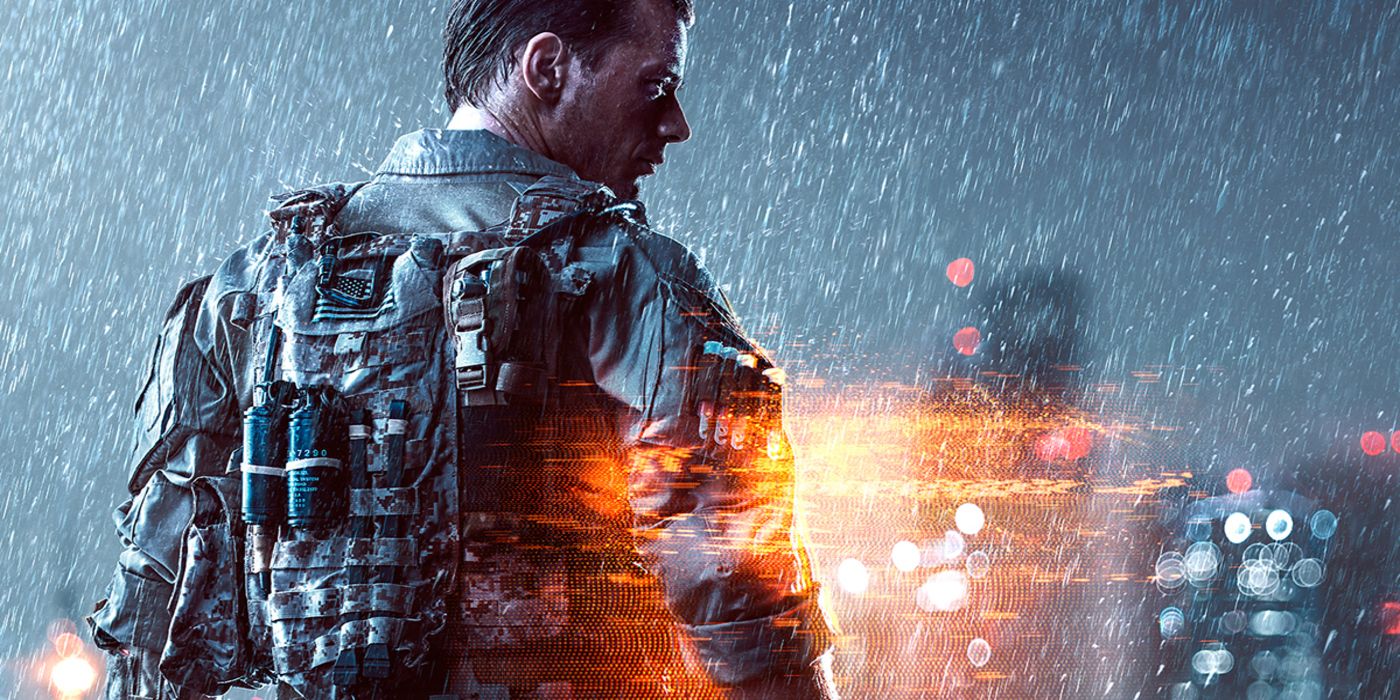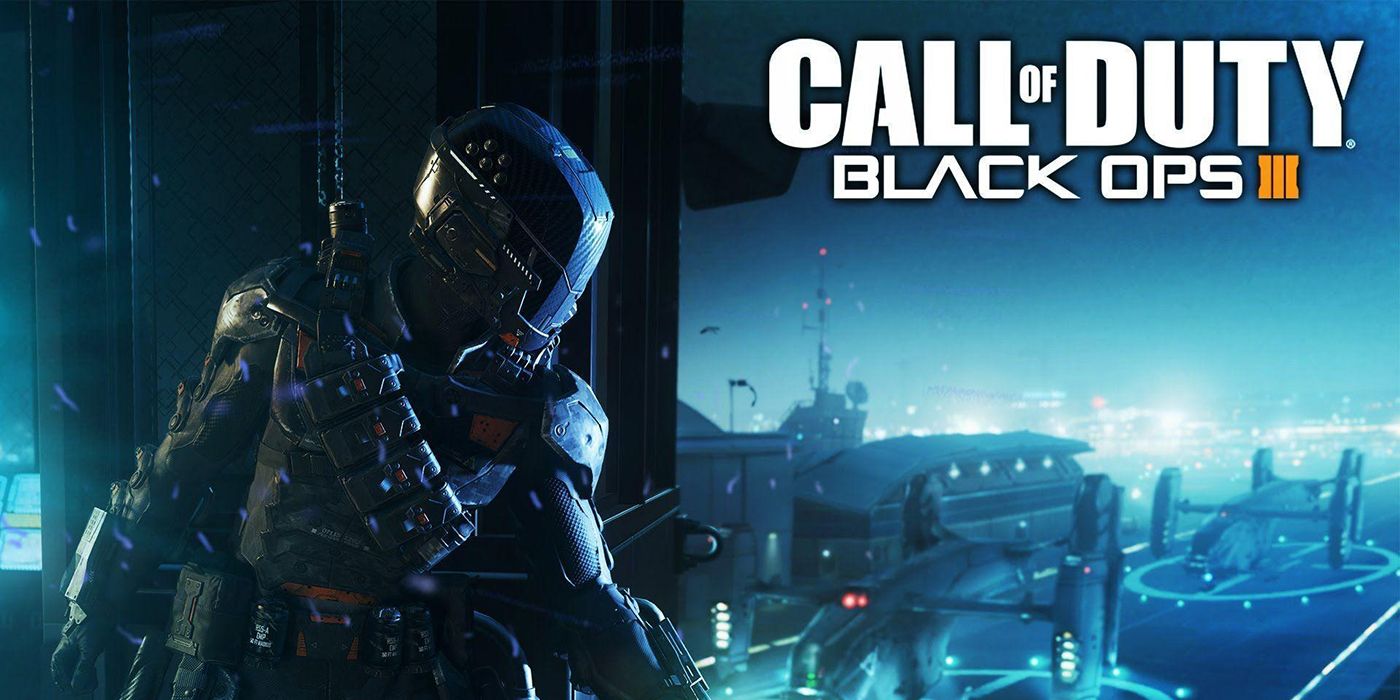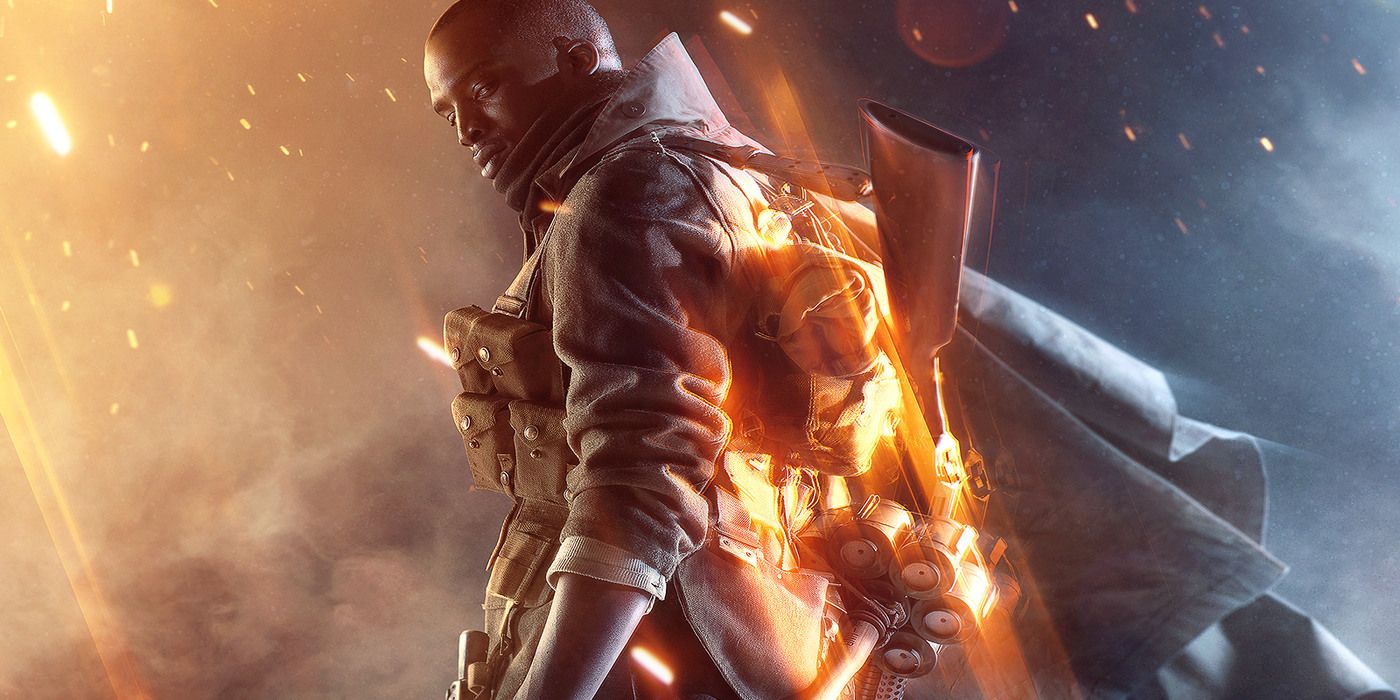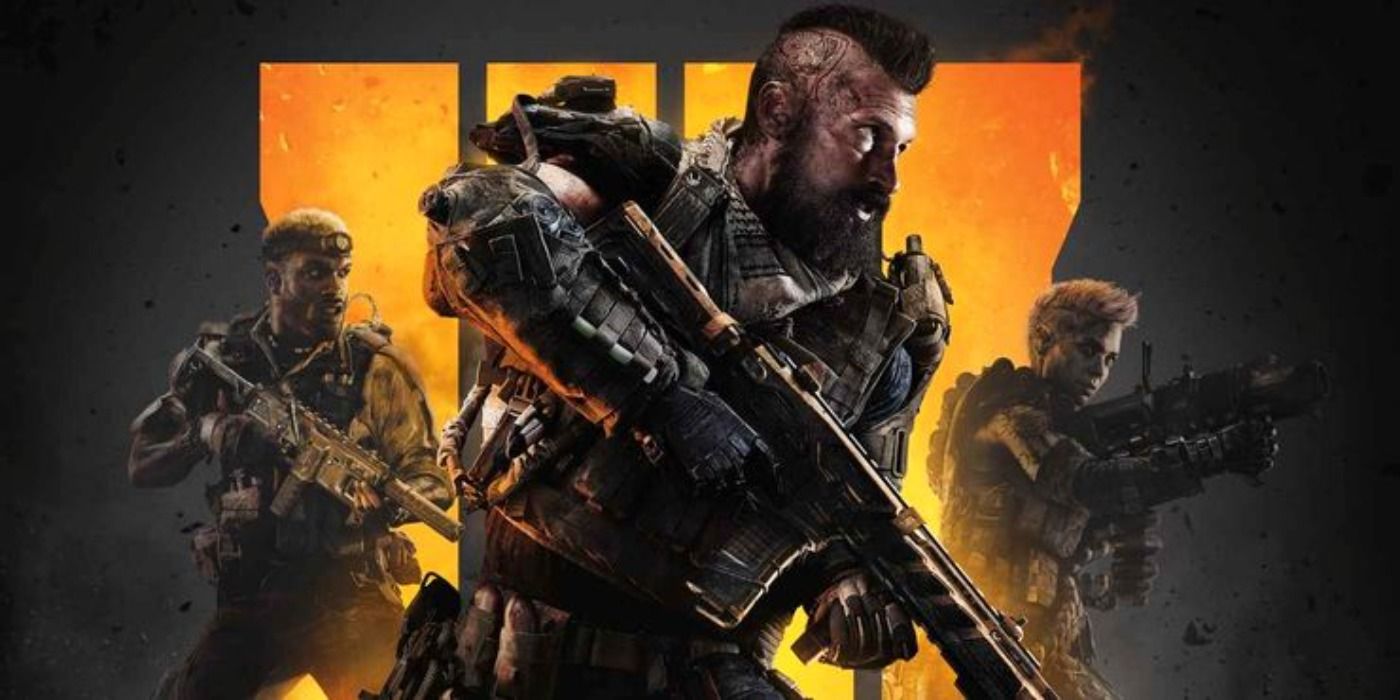Battlefield 6 and Call of Duty 2021 are already shaping up to have an interesting competition, with fans needing to decide which first-person shooter they want to sink their time into later this year. With two vastly different strategies rumored for the two games, as well as completely opposite settings, it will be interesting to see which game comes out on top. However, this is hardly the first time the two franchises have faced off, as the Battlefield and Call of Duty competition has been going on for years.
Battlefield 6 and Call of Duty 2021 will be reigniting a rivalry that properly began back in 2008, and it will be intriguing to see how much the two acknowledge this history with marketing. While Battlefield and Call of Duty have traveled through time, both have maintained each franchise's core gameplay values throughout. The backbone of Battlefield is massive multiplayer warzones with vehicles, destruction, and infantry. For Call of Duty, 6v6 arcade action has been its bread and butter, alongside cinematic campaigns and some co-op offerings. Both are massively popular military FPS games, however, ensuring that they will always be compared with one another.
2002-2007: Minor Skirmishes Between Battlefield and Call of Duty
In the early years of Battlefield and Call of Duty, there was not much competition to be seen, with each series trying to forge its own path to success. Battlefield: 1942, the first Battlefield game, launched in 2002. Call of Duty’s first release came a year later, with a similar World War 2 focus. In 2005, Battlefield 2 made the jump to the modern era, with Call of Duty following via 2007’s Call of Duty: Modern Warfare. With both games being major successes, and the two brands seemingly unable to escape the others’ shadow, the unspoken competition between Battlefield and Call of Duty had quietly begun.
2008: Battlefield: Bad Company vs. Call of Duty: World at War
The fan favorite Battlefield: Bad Company saw the competition become more pronounced, as series developer DICE attempted to win console gamers over with a different Battlefield experience. With players also growing connected to the campaign’s cast of misfits, this mission became a success, as Battlefield was now on people’s radars.
For Call of Duty, 2008 brought Treyarch’s Call of Duty: World at War to players. Featuring a return to World War 2, the game’s gore and dark campaign made it vastly different from Call of Duty 4: Modern Warfare. While it did not receive as much critical acclaim, it has become a cult classic with fans, and its introduction of Call of Duty Zombies remains important.
2009: Battlefield: 1943 vs. Call of Duty: Modern Warfare 2
A year later, there was a bit of a role reversal between Battlefield and Call of Duty. For Battlefield, a return to World War 2 led to one of the series’ biggest successes, as a lack of campaign led to a deeper focus on multiplayer. While there were only a few maps and modes, each was considered masterful, with fans loving this follow-up to the original Battlefield.
In the case of Call of Duty, 2009’s Modern Warfare 2 follow-up proved that lightning can strike twice. A fan favorite campaign delivered a huge twist, while a solid Spec Ops mode offered addictive co-op. The multiplayer mode remains a fan favorite, with many asking for Call of Duty: Modern Warfare 2 Multiplayer Remastered to this day.
2010: Battlefield Bad Company 2 vs. Call of Duty: Black Ops
In 2010, Battlefield: Bad Company 2 released, improving on the original in every way. Stronger multiplayer with minimal-but-meaningful destruction was included, with the game mode Rush becoming a massive hit with console players. The campaign was also entertaining, and it fired direct shots at Call of Duty — with Sweetwater specifically making fun of Modern Warfare’s heartbeat sensors.
As for Call of Duty, Modern Warfare 2 has made the series into a phenomenon, with Call of Duty: Black Ops building on this in many ways. An excellent lineup of multiplayer maps with party games kept fans engaged, while the campaign was even more compelling and unique than its predecessors. Zombies was treated as a proper pillar as well, with the mode truly taking off through this game.
2011: Battlefield 3 vs. Call of Duty: Modern Warfare 3
In 2011, the most popular Battlefield game released, and it proved to be such a success that Battlefield 6 will supposedly be inspired by it. Battlefield 3 not only featured more impressive visuals and destruction, but top-tier map design helped it reach new heights. An equal focus on Conquest and Rush pleased PC and console fans, while themed DLC expansions kept things fresh.
As for Call of Duty: Modern Warfare 3, the game suffered from the departure of half the Infinity Ward team, as disagreements with Activision caused them to leave and form Respawn Entertainment. While developer Sledgehammer Games assisted the remaining Infinity Ward team, the result was a serviceable game that lacked the wow factor of the other Modern Warfare titles. While not bad by any means, this was the year where Battlefield became a genuine threat.
2013: Battlefield 4 vs. Call of Duty: Ghosts
2013 was a rocky road for both franchises, as Battlefield and Call of Duty struggled with the concept of a cross-gen launch. For Battlefield 4, this led to some awful netcode and poor stability, with the game suffering until the midway point in its life cycle. While it had good concepts like "Levelution" and some decent maps, its issues held it down greatly.
As for its competitor, Call of Duty: Ghosts remains divisive. The multiplayer was criticized for its overly large maps, as well as a messy field orders system. The campaign’s poor voice acting and grey color pallet made it forgettable, though its cliffhanger ending does leave some fans wondering what a Call of Duty: Ghosts sequel would look like. Its co-op mode was in a similar place, as some fans loved Extinction while others ignored it entirely. Neither game was truly bad, but both had problems that kept them from reaching the heights of past entries.
2015: Battlefield: Hardline vs. Call of Duty: Black Ops 3
The most experimental year for Call of Duty and Battlefield led to even more controversy, as both games were divisive. In the case of Battlefield, Battlefield: Hardline saw the concept of cops and robbers getting its own game, with the result being an interesting-but-unpolished affair. Made by Visceral Games as opposed to DICE, the lack of experience was clear, though there were some fun modes and maps.
Call of Duty continued with the progressively unpopular futuristic settings started by Call of Duty: Advanced Warfare, though Call of Duty: Black Ops 3 was arguably the most crowd-pleasing attempt at the setting. Featuring a fun multiplayer due to decent map design and an engaging specialist system, supply drops were one of the few issues fans had. The campaign of Call of Duty: Black Ops 3 remains misunderstood, though it was disliked by most fans. However, the game is still noteworthy for its Zombies mode, which most consider the peak of the series due to an excellent DLC run and the Zombies Chronicles remakes.
2016: Battlefield 1 vs. Call of Duty: Infinite Warfare
Another year where Battlefield could be seen getting an edge in the competition, Battlefield 1’s World War 1 focus worked surprisingly well. While destruction and weaponry were more limited, the use of horses and Zeppelins as vehicles was a nice change of pace. The Operations mode proved a success with multiplayer fans, while the War Stories campaign served as a great way to honor the veterans of The Great War.
As for Call of Duty: Infinite Warfare, the decision to go further into the future angered fans. While the campaign is underrated, as it features some good writing and cool side missions, the Zombies mode and multiplayer component feel like Call of Duty: Black Ops 3 with much less personality. However, the inclusion of Call of Duty: Modern Warfare Remastered helped keep Call of Duty afloat.
2018: Battlefield 5 vs. Call of Duty: Black Ops 4
The most recent example of this storied rivalry saw Call of Duty on top once again, so much so that Battlefield has taken some extra time to rebuild itself. Battlefield 5 got off on the wrong foot, with the game’s Grand Operations mode showed that bigger is not always better. Unbalanced with a lack of memorable maps, the game’s biggest letdown was its Firestorm battle royale. Despite coming after launch, it lacked the strengths of other modes in the genre, serving as a nail in the coffin for the game.
While Call of Duty: Black Ops 4 has its issues, such as controversy from the lack of a campaign and a buggy Zombies mode at launch, it was a better game overall. Once Zombies recovered, it was a lot of fun, and multiplayer was decent enough. The star of the show was undoubtedly the Blackout mode, though, as Call of Duty’s first attempt at a battle royale was far more successful than Battlefield’s. With Call of Duty coming out on top in 2018 because of battle royale, it will be interesting to see if history repeats itself later this year.
Battlefield 6 and Call of Duty 2021 are in development.

